Last Updated on 04/27/2015 by Julius Motal
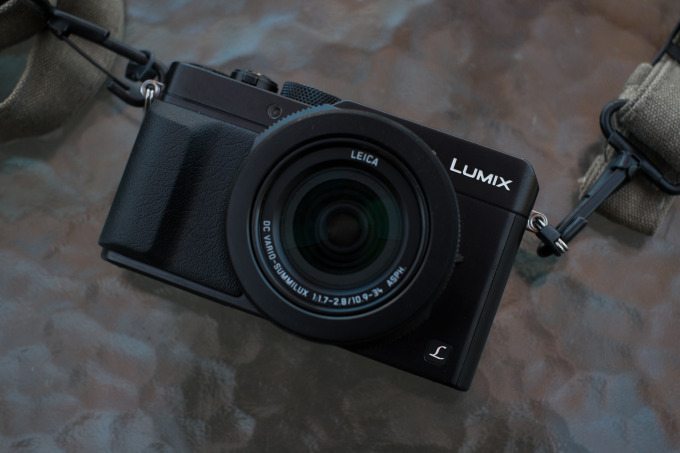
So it was on a cold November day that Editor-in-Chief Chris Gampat would hand me the Panasonic LX100. It had been a while since I reviewed a camera, having been back in New York City for about two months from Istanbul. The LX100 piqued my interest with its design as a premium compact with manual controls. In a past life, I had written micro four-thirds largely because I found the cameras to be too small for my large hands. While the LX100 proved to be impressive in image quality and aesthetic, its diminutive size was a sticking point for me.
The camera is Panasonic’s stab at Fujifilm’s X100 series–and so sports retro handling and looks done in collaboration with Leica. The LX100 has the same sensor as the GX7, and in some ways even has the same styling. But this camera is much different in that at the heart is a Four Thirds sensor and in front of it is a fixed zoom lens with an f1.7 maximum aperture.
And in many ways, it could be a perfect camera for the photojournalist.
Pros and Cons
Pros
-Aperture ring and shutter speed dial maximize the amount of control you have
-Retro aesthetic and small size makes it inconspicuous
-Built-in Wi-fi and the Panasonic Image App enables remote control, which is a good deal of fun
-Impressive image quality and small files makes the camera less taxing on hard-drive space
-Fast lens with a variable f1.7-2.8 aperture
-Fast autofocus
Cons
-Fairly expensive at $900
-The camera, for my purposes, is a bit too small to comfortably use
-Not necessarily a con, but the aperture ring is in front of the focusing ring, which takes some time to get used to
-When the camera’s set to AF, the focusing ring can adjust shutter speed, and if you’re not careful, you might inadvertently change the shutter speed
Tech Specs
Courtesy of B&H Photo Video’s listing:
- 12.8MP 4/3″ Type Multi-Aspect MOS Sensor
- Leica DC Vario-Summilux f/1.7-2.8 Lens
- 24-75mm (35mm Equivalent)
- 2,764k-Dot EVF
- 3.0″ 921k-Dot Rear LCD Screen
- 4K Ultra HD Video at 30/24 fps in MP4
- Full HD Video at 60fps in MP4 or AVCHD
- Manual Control Rings and Dials
- Built-in Wi-Fi Connectivity with NFC
- External Flash Included
Ergonomics
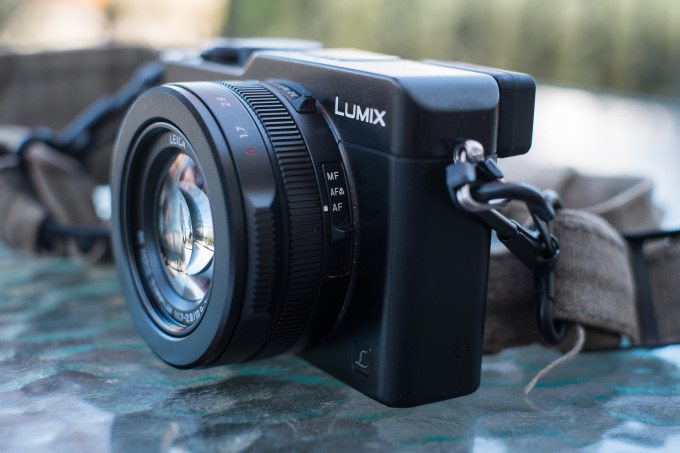
The front of the Panasonic LX100 is largely devoid of anything besides the LUMIX branding and the AF-assist lamp on the other side of the lens. A great deal of the action takes place on the lens itself. You’ll notice here two switches and two rings. The switch at the very top controls aspect ratio: 4:3, 1:1, 16:9 and 3:2. The side switch controls focus: MF, AF Macro and AF. The textured ring just in front of the switches is for manual focusing in MF, and when its in AF, it can adjust shutter speed two stops in either direction. If your shutter speed is set to Auto, that ring controls the zoom. The ring just in front of that one is the aperture ing, and it has raised, textured grip on each side of the barrel to facilitate adjusting the aperture. It also makes it easy to distinguish from the multipurpose ring behind it.
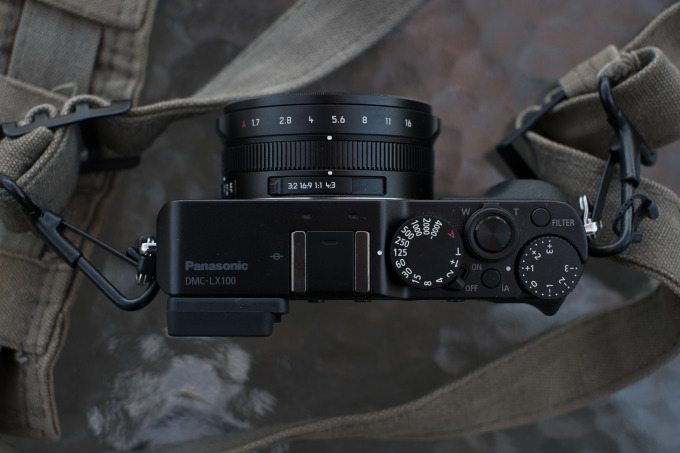
Along the top from left to right, you have the hot shoe, shutter speed dial, ON/OFF switch jutting out of the shutter speed dial, zoom toggle around the shutter release, iA button, exposure compensation dial and filter button. The shutter speed and exposure compensation dials are well designed and sturdy enough that accidentally passing by them with your thumb won’t accidentally adjust them.
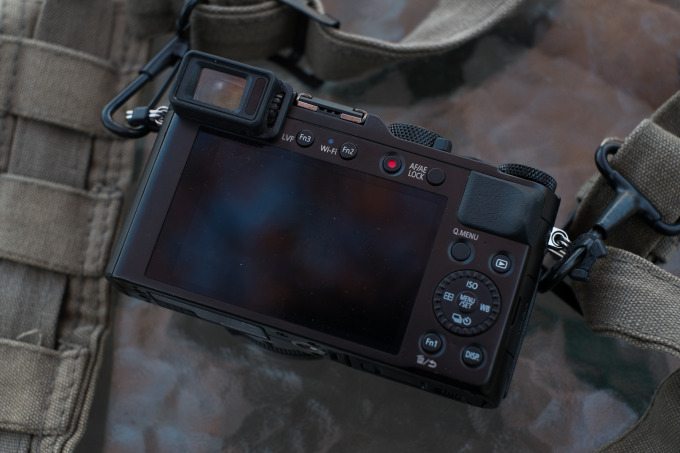
The back of the camera is fairly robust with its wealth of controls. The diopter switch is right next to the EVF. Beyond that, there are two function buttons (Fn3 and Fn2), movie record, AF/AE lock, thumb grip, Quick Menu, playback, Fn1 and display buttons. A directional pad/ring – with ISO, White Balance, burst/timer and focus area controls – surrounds the menu button. All of this surrounds the big, bright LCD screen. The Fn2 and Fn3 buttons are in an awkward spot, if you want to access them while having the camera raised to your eye. The camera’s small size also means that my thumb easily covers too many buttons.
Build Quality
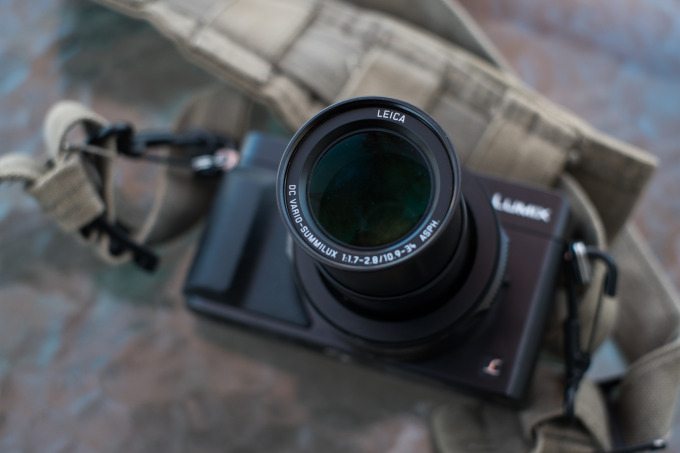
The LX100 is a dense camera, with airs of the Fujifilm X100-series of cameras, though the Fujifilm line benefits from a larger size. Unfortunately for some, the LX100 might prove to be too small, as it has for me, though it’s metallic feel and streamlined design easily makes it a strong contender in the premium compact field. I’d feel comfortable if this camera got bumped around a bit, though it hasn’t during the course of the review period. Essentially, it’s reassuringly sturdy.
Ease of Use
This isn’t a camera you’d get for someone who wants to click once and be done with it. The LX100 is a serious compact camera for serious photographers looking for a solid alternative to their main rig. Granted, this could be a good camera to learn on with its fast zoom lens and manual controls, but it is an investment, both in money and time because it does take some getting used to. Though if you’re coming from Leica or Fujifilm, you’ll have an easier time picking it up. Save for the aperture ring being in front of the focusing ring, everything on the LX100 is fairly intuitive.

The LX100 has the added benefit of built-in wi-fi, which enables both transfer of jpegs and remote control via the Panasonic Image App. This is a boon for folks who want to take self-portraits and long exposures.
Autofocus
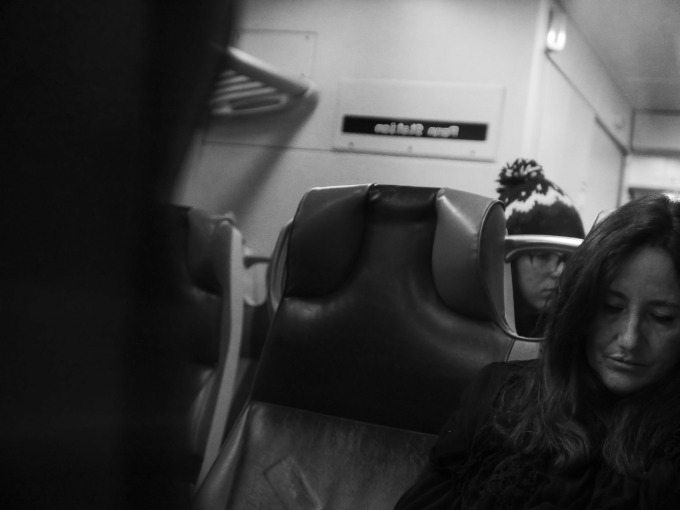
The autofocus is very good and very fast, particularly through a window on a moving train in a tunnel. Face detection accurately tracks faces, and even while walking, the camera will focus properly in most cases. The LX100 also has eye-detect AF, which means once you raise the camera to your eye, it’ll focus instantly. Manual focus is a breeze, too, thanks to the focusing ring and focus peaking.
Metering
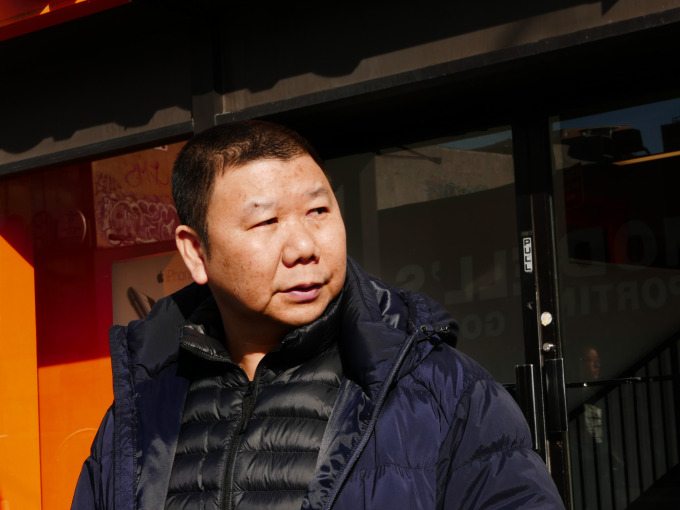
The LX100 performed very well with the Sunny-16 test. We found that it underexposed just a touch, but it’s a quick fix in Lightroom.
Image Quality
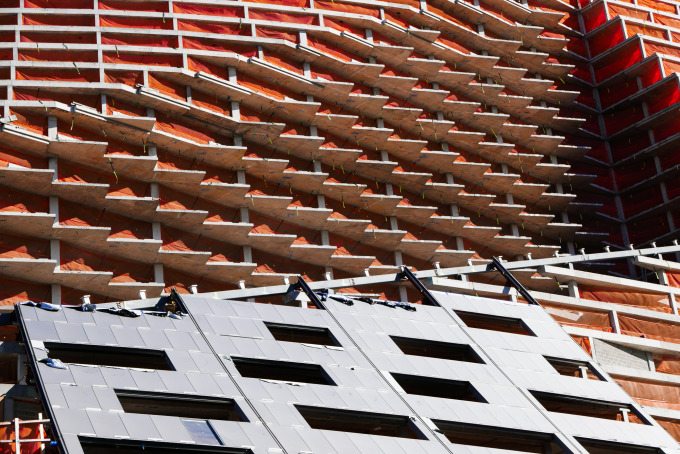
The LX100’s image quality sings in a way I didn’t anticipate. While the micro-four thirds field isn’t a new one, it is new to me, and the LX100 seems to be a great gateway to the format. During the course of the review period, the LX100’s RAW files weren’t supported by Lightroom, but with the recent 5.7 update, the LX100’s one of the supported cameras.
High ISO Images

This was taken at ISO 1600 and 1/60 sec at f2.8. There’s a smooth grain at ISO 1600 that gives the photograph a nice aesthetic, and it works even better in black & white. The LX100 can reach ISO 25600, though I don’t trust it, and I’d stay away from the higher ISOs, if I can afford it.
RAW File Versatility

The LX100 joined the list of supported cameras in Lightroom’s 5.7 update. The LX100 produces RAW files with an average size of 15MB, a far more manageable size than bigger cameras, and they’re flexible, too. A great deal can be recovered from the highlights and the shadows, though it doesn’t have nearly as much information heavier rigs, but you’re not looking at those cameras. You’re looking at this one, not for its megapixel-count, but for what it can accomplish at such a small size. And it can accomplish a great deal.
Extra Image Samples



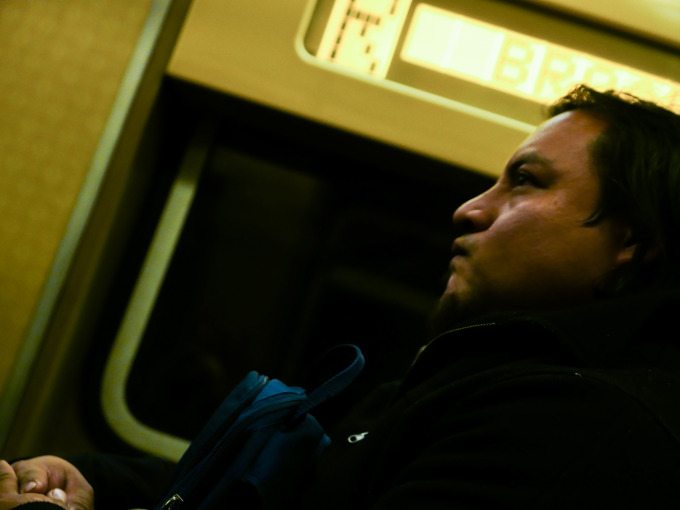
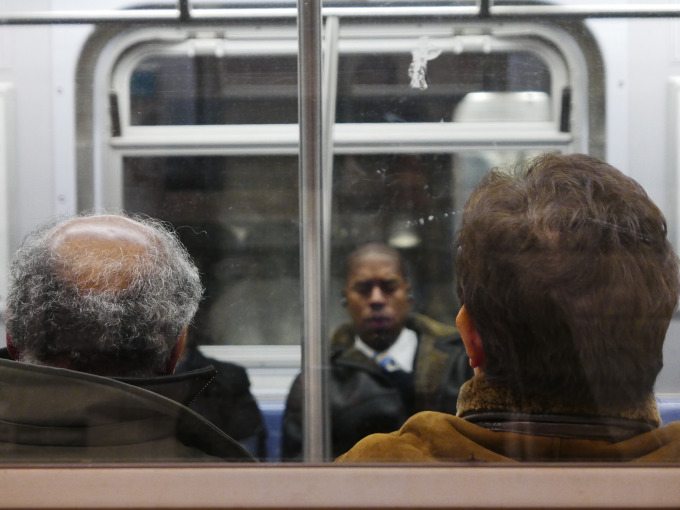



Conclusion
Likes
-Aperture and shutter speed rings
-Retro aesthetic
-Brilliant JPEGs straight out of camera
-Built-in Wi-fi
Dislikes
-Small size is tough-going for those with larger hands
-Price is a bit steep at $900

Despite its size for my mitts, the LX100 was a joy to use with superb image quality and manual controls that makes it a strong contender in the premium compact space. It’s retro aesthetic makes it a boon for street photographers because of how inconspicuous it, and its fast-AF guarantees you’ll get most of your shots. The fast Leica glass lends itself to the strength of the LX100’s images. Its sturdiness means it can survive bumps and dings along the way. The LX100’s also a great travel camera, and it’ll easily fit in your jacket pocket in the cold winter months. For all of these reasons, we’re giving it our Editor’s Choice Award.
You should keep in mind, however, that this premium compact comes at a premium. It can be yours for $900, so make sure its a camera you want to invest in. It’s decidedly not a camera for those who want to keep it in Auto and shoot freely. You could do that, but what would be the point of all the manual controls? It’s also small, so keep that in mind, too, if your hands are larger than average.
Remember that I’m only one type of user, so your tactile experience with the LX100 will be different than mine, and it is a worthwhile camera. I also can’t emphasize enough how useful the built-in wi-fi and Panasonic Image App are. Photographic luddites might shake their fist at the features, but the technology’s there. Why not use it?

All things considered, we give the Panasonic LX100 five out of five stars.
You can pick yours up at B&H Photo Video, Adorama or Amazon.

